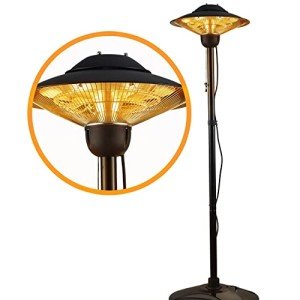How to Choose a Patio Heat Lamp Electric
There are many options available when it comes to heating your patio. In contrast to propane models that require refills, electric heaters can deliver instant heat by simply flipping the switch or pressing the button.
They also don't emit gasses that could be harmful to health. Some offer adjustable heat settings for different distances.
Heater Type
With the appropriate patio heater, you can comfortably enjoy your outdoor living spaces well into the night and throughout the seasons. Patio heaters are available in many varieties including freestanding propane models, natural gas models, as well as ceiling or wall mounted electric radiant heaters. Your choice will be based on the size of your space, power sources available, and your personal preferences.
Most patio heaters are powered by electricity or liquid or natural gas and emit heat in convection as well as radiant heating. The heat output is measured in watts, and can be converted to British thermal units (BTUs) to compare. Certain models come with adjustable heat settings to give you more flexibility.
Patio heat lamps include the use of a burner that is mounted on a pole, and an open-pored screen that reflects flames and sends heat downwards to warm objects, people and furniture. Some come with a reflector atop the burner, which can be plated with silver to decrease the amount of heat lost upwards.
The most popular kind of patio heater that is a gas patio heater is usually found in outdoor seating areas at restaurants and bars as they produce a lot of heat quickly and distribute it evenly across all directions -- great for warming tables. These patio heaters are portable and can run on propane tanks, or they can be plumbed in to your natural gas line. This is more convenient and comes with lower initial costs, but requires fuel.
Gas patio heaters are becoming more popular as more homes have natural gas lines. They're simple to install, but require a dedicated and properly functioning gas line to function in a safe manner. There are portable natural gas heaters that come with extension hoses which can aid in overcoming this issue however they could be a risk of tripping and a fire risk when not being used.
Safety
Electric patio heaters can be used safely in covered areas, as they allow heat to radiate upward and not outward. However, they're not intended for use under an open roof. The heater should be set at minimum 18" from the walls adjacent to it or 6" from the ceiling to avoid fire hazards.
best electric patio heaters made of propane and gas can only be used in enclosed areas that are fitted with an enduring cover specifically designed for outdoor use. They are usually constructed of fire-resistant fabrics and have an open roof that can be closed. The safety issues with these types of outdoor patio heaters is due to the fumes and flames they produce. They should be placed away from flammable items like curtains and chairs.
When installing an electric patio heat lamp or any other patio heater, be sure to adhere to the manufacturer's instructions and safety measures carefully. Choose a model that has received UL and CSA safety certifications and be sure to read the user's manual thoroughly. Make sure the heater is out of reach of children and pets. Some patio heaters that are freestanding like EUROM's include a tipping safety feature that shuts the device off if it falls.
If your patio heater is connected to a natural-gas line, you should check its condition periodically and test it by a licensed professional to identify leaks. If the line needs to be replaced, make sure to employ a licensed plumber. A professional can determine if the line is properly routed or if it should be routed through an underground pipe. A professional can make sure the patio heater is plugged into an outlet that is GFCI (ground fault circuit interrupter) rated to protect against electrical fires and shocks.
Installation

The size of the patio heater is positioned determines the amount of heat it will radiate into the area. The heater should be mounted away from surfaces such as plastic and wood that may deform. Depending on the model of heater, you can choose to mount it on a wall or a structure using conventional mounting brackets. Certain models come with a soft start, which decreases the peak current in order to protect your circuits.
